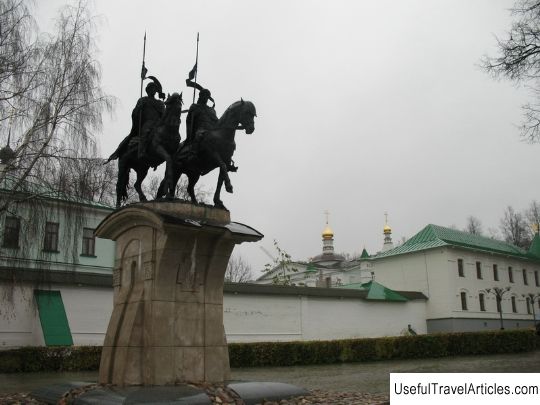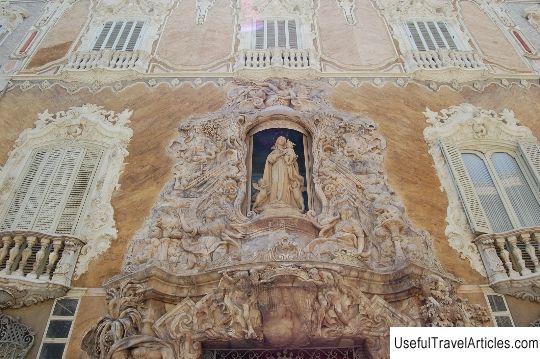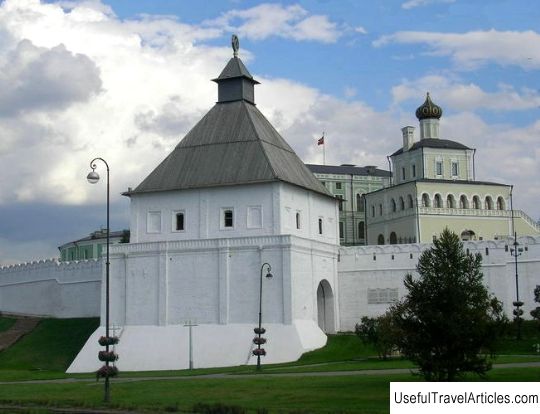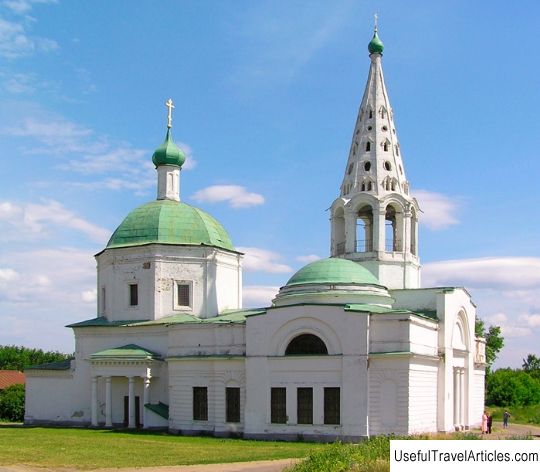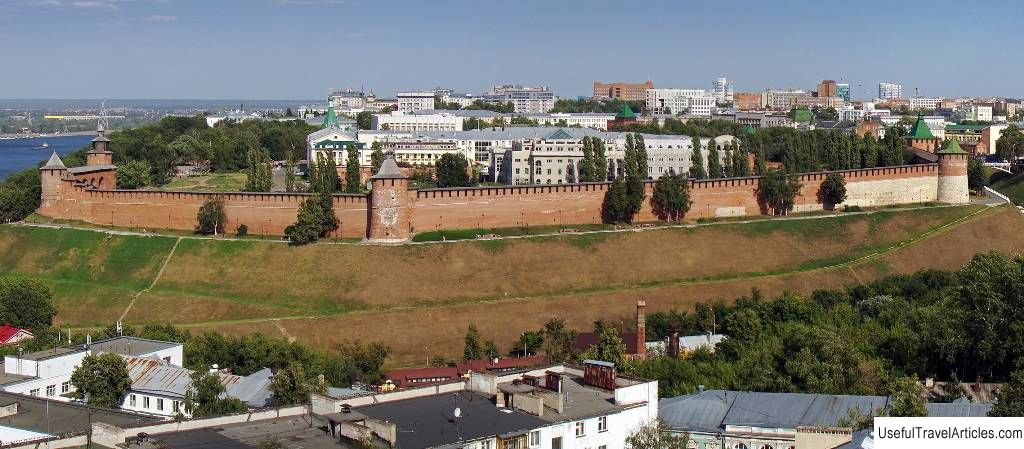Dmitrov Kremlin description and photo - Russia - Moscow region: Dmitrov
Rating: 8,2/10 (2430 votes) 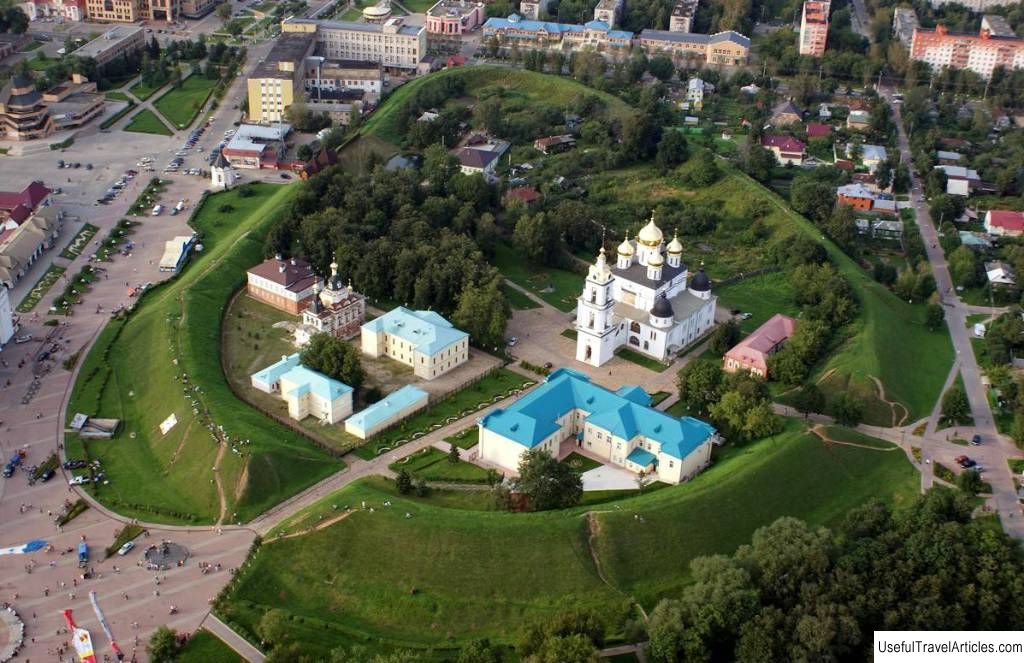
Dmitrov Kremlin description and photos - Russia - Moscow region: Dmitrov. Detailed information about the attraction. Description, photos and a map showing the nearest significant objects. Photo and descriptionThe picturesque ensemble of the Dmitrov Kremlin consists of the Dormition Cathedral of the 16th century surrounded by high earthen ramparts, interesting monuments in and around the Kremlin, and a museum of local lore located in several buildings. The history of the fortressThe city of Dmitrov, like Moscow, was founded by Prince Yuri Dolgoruky . The city was named after his son Dmitry. It was supposed to be a fortress protecting the northern borders of the principality, as well as trade routes leading along the Yakhroma River to the Volga. At first, the fortress was wooden and rather small. But already in the first hundred years, battles were fought for it. It was founded in 1154 , and in 1180 it was burned during the battle of Vsevolod the Big Nest with the Chernigov prince Svyatoslav . During the period of feudal fragmentation, the city repeatedly changes owners and is part of one or another principality. The fortress is growing. It is surrounded by powerful earthen ramparts - now the height of these ramparts reaches nine meters - and a palisade. In 1238, the city was again burnt down by the khan Batu , and then by the khan Tudan . Since 1334, the city has become the center of a separate principality - Dmitrovsky, and after 30 years it finally becomes part of Moscow. Despite periodic fires and devastation, the city is getting rich. He still controls trade routes to the Volga and to the north. During the Time of Troubles, Dmitrov is on the path of the False Dmitry retreat from the Trinity-Sergius Lavra. More than a year troops Yana Sapega besieging the monastery, and when they have to admit defeat, they retreat to Dmitrov. In the winter of 1610, Polish troops are blocked in the city. On all approaches there are detachments of Pomor skiers of the commander Skopin-Shuisky , who are much better than the Poles at fighting in the deep Russian snow. When Polish troops do attempt to fight outside the walls of the city, they are completely defeated. The Dmitrov Kremlin was never made of stone. In the winter of 1610, the fortress was still wooden and was badly damaged during the hostilities. It was renovated, but they did not begin to restore it in full, and later it was finally dismantled. Now the territory of the Kremlin is surrounded by high ramparts , they date back to the XII-XIII centuries, that is, go back to the times of Yuri Dolgorukov. The wooden gates leading to the Kremlin - Nikolskie have been restored. Once upon a time, the fortress had nine wooden towers, of which two were gateways. Nikolsky Gate was recreated for the 850th anniversary of Dmitrov - in 2004. Cathedral of the Assumption We do not have an exact dating of the construction of the White-stone Cathedral of the Dormition in Dmitrov. A wooden church at this place most likely stood since the founding of the city. The stone cathedral was built in the first third of the 16th century during the reign of Prince Yuri Ivanovich . Its closest architectural relative is the Archangel Cathedral of the Moscow Kremlin. This is not surprising - the Archangel Cathedral was built by Ivan III, the father of the Dmitrov prince Yuri, several years earlier. Architects argue about who designed the Assumption Cathedral - the same Italian architects or others. Most often it is attributed to the architect Aleviz Novy . A group of architects was invited from Italy by Ivan III in 1504. They built, in addition to the Archangel Cathedral, the Trinity Cathedral in the Alexander Sloboda, the Church of St. Barbarians on Varvarka and much more. Perhaps the Assumption Cathedral in Dmitrov was created precisely based on the motives of the Archangel Cathedral, perhaps it is an independent work with an orientation towards the Italian Renaissance. This is a classic cross-domed five-domed temple . Over the centuries, the decor changed greatly: for example, in the 18th century, huge tiled bas-reliefs with the Crucifixion and St. George the Victorious. In 1825, a new limit appears - in honor of the Protection of the Virgin. It was built in the then fashionable pseudo-Gothic style, but perfectly fit into the Italian temple. The architect of this limit was F. Shestakov . The most famous creation of this architect is the Moscow Church of the Ascension at the Nikitsky Gate, the same one where Pushkin was married. Then, in 1842, another border was built on the other side, almost the same. The original belfry has not survived, the current bell tower appeared at the end of the 18th century. In the twenties of the XIX century, a clock was installed on it. The temple here ceased to function in 1930. The cathedral has remained a museum , so most of the interior decoration has been preserved. The frescoes in the cathedral date back to the first half of the 19th century. The iconostasis is made of wood. The very foundation was made in the 18th century, and icons have been collected since the 15th century. Another example of magnificent 18th century wooden carving is the “bishop's seat”, a canopy throne, on which the bishop was during the service. It was brought here from the Moscow Krutitsy. Some of the treasures of the Assumption Cathedral are in the Moscow Tretyakov Gallery - for example, the icon of Dmitry Solunsky of the 12th century. The temple was restored twice, in the 60s of the XX century and at the beginning of the XXI-st. Then he was transferred to the believers. For some time the premises were divided between the church and the museum, but now the museum has moved to a separate building and the cathedral is entirely owned by believers. Monuments in the Kremlin Near the Kremlin there is a monument to the founder of the city - Yuri Dolgoruky . Unlike the Moscow equestrian, this prince is depicted on foot. The author of the sculpture is V. Tserkovnikov . A monument to Holy Martyr Seraphim (Zvezdinsky) has recently appeared in front of the Assumption Cathedral. This man had been bishop of Dmitrov since 1920, during the most difficult years for the Orthodox Church. He spent only two years in Dmitrov, and from 1922 to 1925 he was imprisoned, first in Butyrka, then in Ust-Sysolsk. After his release, the Chekists offered him cooperation, but he refused, was dismissed from the staff, then exiled again and died in 1937 in Ishim. Canonized in 2000. A monument to Saints Cyril and Methodius , Slavic enlighteners, is also erected in the Kremlin. Just a few meters from the Kremlin is Kropotkinskaya Street , which has been turned into an open-air sculpture museum. Figures of peasants, young ladies, peddlers take us to the county Dmitrov of the 19th century. The author of these sculptures is A. Karaulov . It ends with the house-museum of Peter Kropotkin, a prince and a revolutionary who lived out his life in Dmitrov. The Dmitrov Kremlin Museum-Reserve The Dmitrov Museum was founded before the revolution. It began as a "Museum of Goods" at the Dmitrov Union of Cooperatives, that is, it was conceived approximately as an "exhibition of the achievements of the national economy." But with the beginning of the revolution, many other items appeared in his collection. The museum is located in the mansion of the Gagarin princes . Princess Nina Gagarina becomes scientific secretary, Princess Anna Shakhovskaya, the daughter of a famous cadet party leader and the Decembrist's great-granddaughter, becomes the head of the museum. She is engaged in the natural science component of the collection and is writing a book about the nature of the Dmitrov region. A meteorological station has been organized at the museum; an exposition of minerals and herbariums of the Dmitrov flora appears in it. Since 1926, the museum moved to Borisoglebsky Monastery , then the Assumption Cathedral was handed over to it. At first, the cathedral's property is supposed to be liquidated as ideologically harmful, but the museum staff heroically save it. In the 1930s-1940s, the museum was entirely partisan. The iconostasis is closed from visitors, The exposition tells mainly about the achievements of the national economy: it occupies not only the building of the cathedral, but also the Kremlin square. During the war, the museum continues to function, sharing the premises with a bomb shelter in the basement and a grain warehouse. Now it is one of the largest museums in the Moscow region. In 2018, it officially celebrated its centenary. In 2004, the funds moved to a new building, two hundred meters from the ramparts, almost on the territory of the Kremlin itself. The museum manages several buildings in Dmitrov. This is the house-museum of P. Kropotkin, the house of St. Serafim Zvezdinsky, the building of the noble collection , which hosts art exhibitions, and the main exhibition on Pushkinskaya Street. Museum expositionInteresting factsNear Dmitrov, in Verbilki, a porcelain factory founded in the 18th century still operates. Gardner's porcelain is known all over the world. Not far from the Kremlin is their brand store. Near Dmitrov in the First World War, they tried to create a giant combat vehicle - the prototype of a wheeled tank. The car could not go - it got bogged down in the ground, stood until 1923 and was scrapped. The model of this car can now be seen in the museum. Notes
|

























